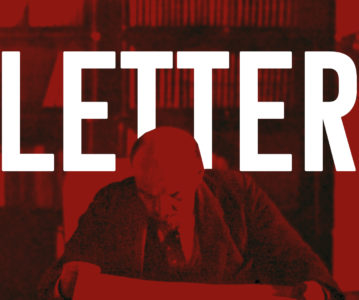I want to call the attention of Cosmonaut’s readers to my article, published recently in the Weekly Worker: “In Search of a Synthesis.” I believe it is directly relevant to the ongoing conversation we have been having on this website about MUG’s political orientation and the question of “schematism.” Note also that Mike promises a reply, perhaps as early as the end of this month.
I have no principled or theoretical objection to the idea that the direct struggle for “extreme democracy” can be a key element in a revolutionary program, perhaps even the key element as MUG projects in its approach in the US, captured by your call to “Fight the Constitution!” The problem arises for me because I sense that there is, in MUG’s strategic/theoretical conception, a direct line from this struggle/call for “extreme democracy” to actually achieving it—that is, to the seizure of power by a working-class government. The perspective seems to be that, somehow, the gradual process of winning a majority for extreme democracy is a sufficient orientation for us as we attempt to position ourselves to take power.
What this leaves out is the importance of understanding the dynamics of an insurrectionary moment “when the existing state falls into crisis” and we need “a large minority already existing which can think of socialist collective action as an alternative way of making decisions, and hence possibly running society, and this large minority can be converted into a majority.” (I reproduce words by Mike Macnair, cited in my article. Emphasis is in the original. It’s important to note that the quote does not come from his book, which fails to actually consider this insurrectionary moment, but from personal correspondence between Mike and me.) It remains my judgment, based on our conversation so far, that the failure to adequately consider the dynamics of such an insurrectionary moment reflects an under theorization of this most crucial aspect of revolutionary strategy—both in Mike’s book and in MUG’s programmatic approach.
The kind of social crises that Mike describes, creating the conditions when it becomes possible for our large minority to be transformed into a majority, arises periodically, when masses of people are spurred into direct action around some grievance, or set of grievances, demanding redress from the existing state that the current ruling powers are either unwilling or unable to satisfy. A phenomenon of this kind most often develops, when it develops, quite independently of whatever revolutionary formations might exist—that is, it isn’t called into being by us. It represents, instead, a vast creative social force that neither we nor anyone else is able to control. At such a moment our “large minority . . . which can think of socialist collective action as an alternative” is, yes, in a position to transform itself into a majority in a sense, but only in a sense. In a different sense it is not us transforming ourselves into a majority, but us simply merging with the new social majority that has suddenly become active in response to their grievances, convincing this newly-developed majority that “socialist collective action” is the “alternative way of making decisions” that can, in fact, lead to the fulfillment of the demands that have spurred them into action.
Our task between now and then is, it seems obvious, to become a large enough minority so that we can actually offer this alternative in a way that will be heard by sufficient numbers so the suddenly-activist majority movement as a whole can adopt our goal of “extreme democracy” as its own. Mike Macnair and MUG both seem to be focused on this task—of growing into a large enough minority. It’s an essential task, and the approach you take to it seems basically correct to me. But there are two other tasks that are equally important and therefore must be theorized equally: (a) How do we position ourselves to successfully merge with the new mobilized majority when it arises? (b) Once we have merged with that majority, how do we actually displace/disperse the old state and bring the new one into being? MUG’s theory seems to be uninterested in these two questions, and there are aspects of Mike’s approach that are actually counterproductive in my view—such as his rejection of the mass strike/dual power approach as a part of our revolutionary strategy.
For today, I sign off after merely sketching this difficulty: it isn’t sufficient for us to grow into a large minority, and not even for us to merge with a newly-active majority when it arises. We also have to know what to do once we have achieved majority status. I will not, in this letter, begin to discuss all of the implications of that insight. My primary goal for now is, rather, to simply pose the following question: do others in MUG with whom I have been discussing this constellation of issues in recent months agree with me that there’s a relationship between the questions posed by my article in Weekly Worker and the issues we have been exchanging thoughts about here? If so then it surely makes sense to use that appreciation as a way to frame our conversation moving forward.
-Steve Bloom





